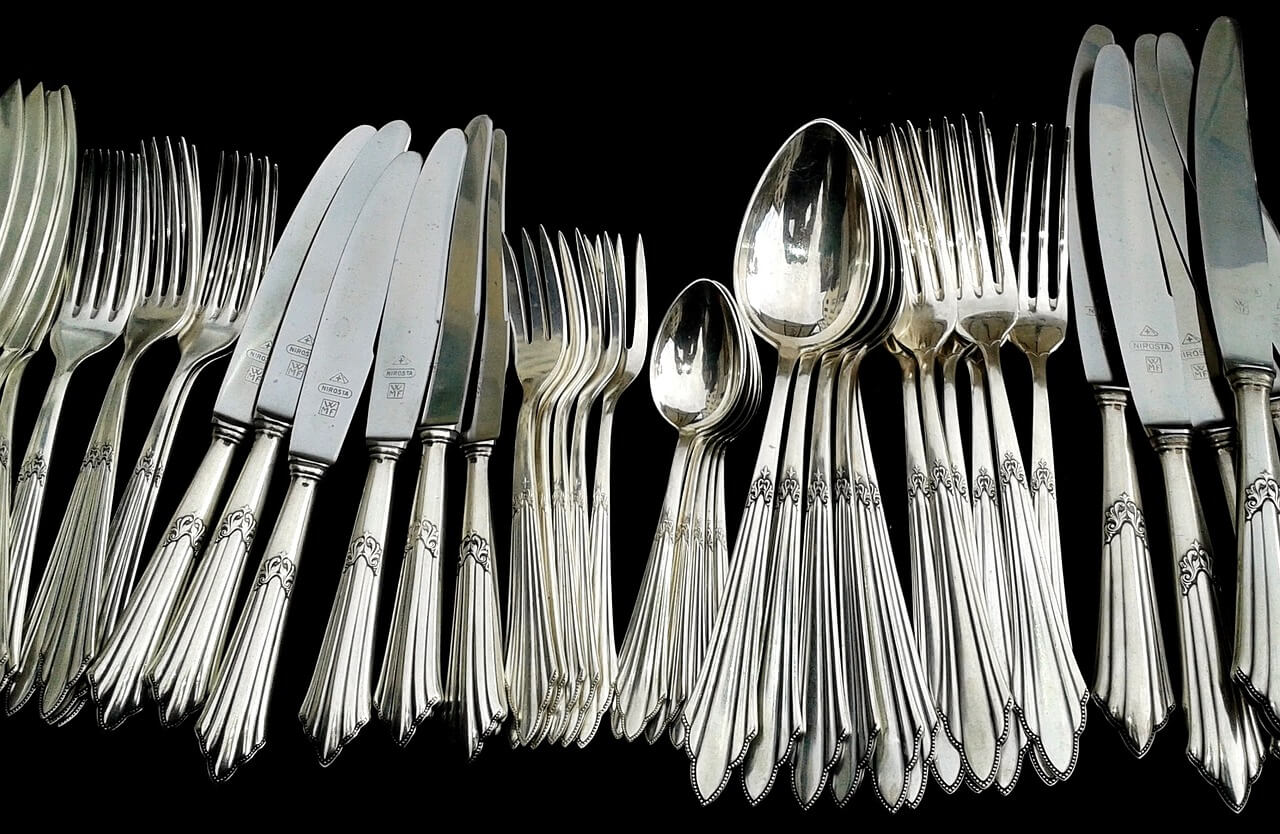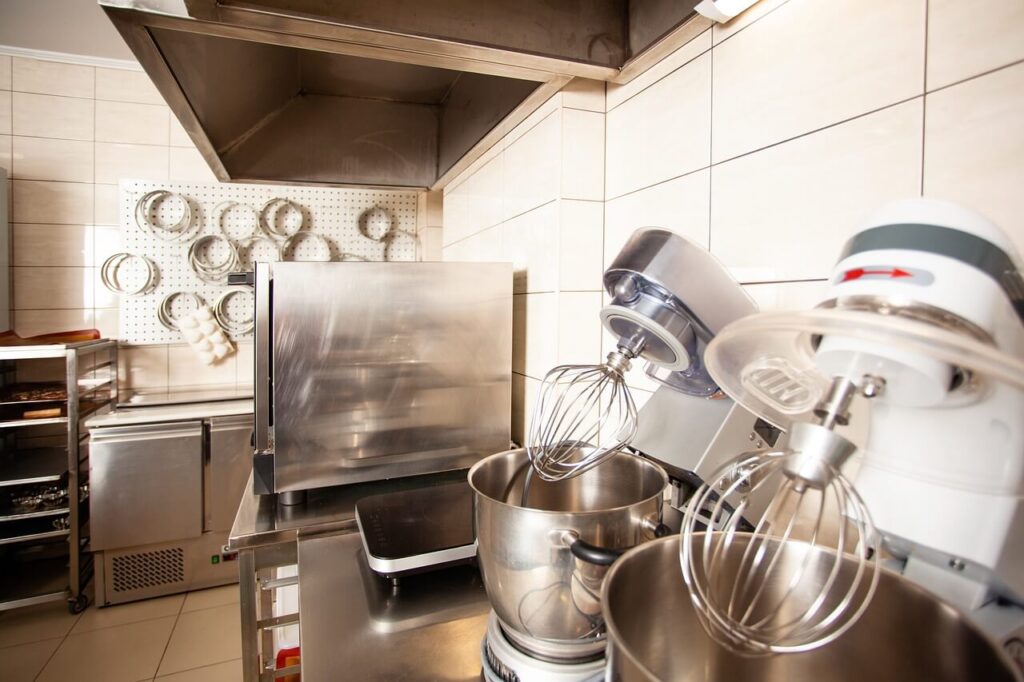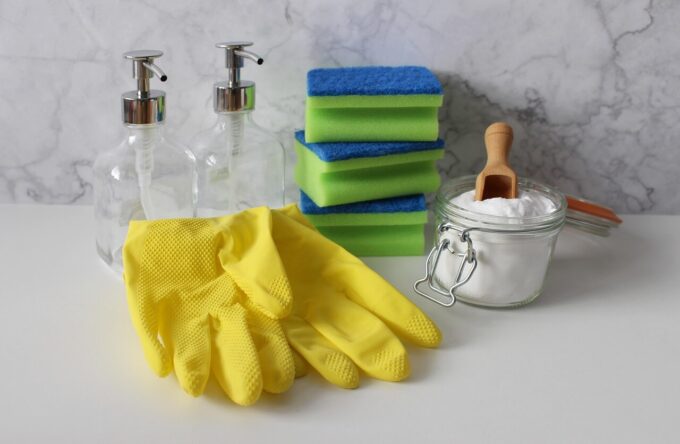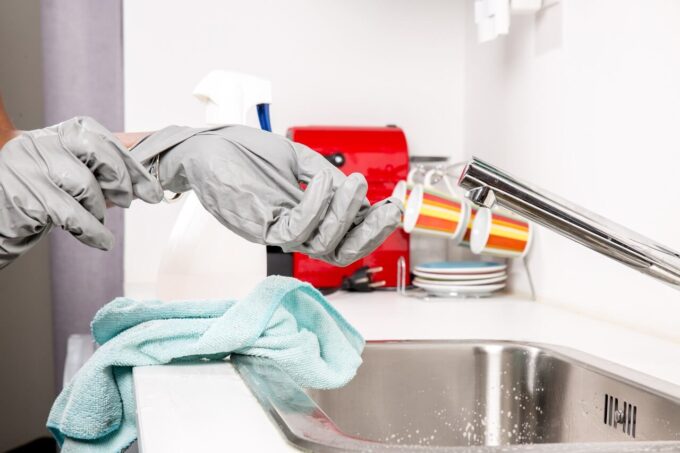
That premium metallic finish in your kitchen creates an elegant atmosphere—until it doesn’t. Handprints, cooking splatter, and dull patches appear seemingly moments after cleaning. If you’ve experienced the frustration of attempting to clean these surfaces only to worsen their appearance, you’re in good company.
Fortunately, specialized commercial products aren’t necessary. Using just a handful of pantry staples, you can transform your dulled metallic appliances into spotless showpieces—without a single streak. This guide reveals the most effective approach to naturally rejuvenate your brushed metal kitchen surfaces.
Understanding Your Metallic Surfaces’ Unique Needs
Let’s acknowledge the truth—brushed metal surfaces are remarkably unforgiving. They highlight every imperfection: water droplets, cooking residue, and even cleaning attempts. Incorrect cleaning techniques often amplify existing marks rather than removing them. Certain products can even degrade the protective coating or create a hazy residue.
These surfaces demand a thoughtful approach: follow the directional pattern, avoid abrasives entirely, and ensure complete drying. When executed properly, your surfaces will maintain their factory-fresh luminosity.

Essential Natural Cleaning Arsenal
Gather these straightforward items for optimal results:
✅ Soft microfiber cleaning cloth – prevents scratching while capturing residue effectively
✅ Distilled white vinegar – dissolves grease and eliminates accumulated grime
✅ Food-grade oils (olive or coconut) – creates a protective, radiant finish
✅ Misting container – for controlled vinegar application
✅ Additional option: Sodium bicarbonate – for gentle removal of persistent residue
This uncomplicated collection of household staples delivers professional results without chemical additives.
Four-Step Cleaning Method for Flawless Results
Transform your appliances with this methodical approach:
- Apply vinegar solution.
Transfer white vinegar to a spray bottle and lightly mist the surface. Apply sparingly—excessive moisture complicates the process. - Clean with proper technique.
Using your microfiber cloth, wipe exclusively in the direction of the visible grain pattern (typically running either horizontally or vertically across the surface). This technique efficiently removes dirt while preventing streak formation. - Create protective shine.
Apply several drops of your chosen culinary oil to a fresh section of cloth. Gently buff the surface, maintaining the same directional pattern. This step eliminates remaining smudges while creating a protective barrier with exceptional clarity. - Address resistant spots when necessary.
For stubborn areas near handles or persistent marks, create a gentle paste using sodium bicarbonate and minimal water. Apply with light pressure using your cloth, then neutralize with vinegar before wiping clean. - Complete with thorough drying.
Finish by thoroughly buffing all moisture from the surface using a fresh section of microfiber. Eliminating all dampness prevents spot formation.
This straightforward process delivers exceptional results without commercial cleaning agents.
Preventing Common Cleaning Pitfalls
Previous disappointing results likely stem from these frequent missteps:
❌ Utilizing rough cleaning tools or metal scrubbers – these create permanent micro-scratches
❌ Cleaning against the directional grain – this redistributes residue rather than removing it
❌ Inadequate drying after cleaning – moisture left behind creates inevitable spotting
❌ Applying chlorinated products or ammonia-based cleaners – these damage protective finishes
Mindful attention to these details preserves your appliances’ appearance and integrity.

Maintenance Strategies for Extended Brilliance
Maintain that impressive showroom appearance with these simple practices:
✅ Immediately dry surfaces after exposure to moisture.
Cooking vapor and water droplets create spots if allowed to air-dry.
✅ Implement weekly oil treatment.
A quick application not only enhances shine but creates a protective barrier against fingerprints.
✅ Protect surfaces from direct heat.
Thermal contact can gradually distort and dull metal surfaces.
✅ Keep cleaning solution accessible.
A quick spray-and-wipe after cooking prevents accumulation of residue.
Consistency yields results. These brief maintenance habits minimize deep cleaning requirements while maximizing your kitchen’s aesthetic appeal.
Maintaining brushed metal finishes needn’t be complicated. With appropriate tools and natural ingredients, you can achieve professional results without specialized products. The combination of vinegar, culinary oil, and proper technique transforms this traditionally challenging task into a straightforward process. By incorporating these methods into your routine, your kitchen surfaces will maintain their original brilliance indefinitely.
Latest Posts
How to Clean Your Walls Without Damaging the Paint
Reality check—walls accumulate debris over time. From oily handprints around switch plates...
3 Mins readHow to Deep Clean Your Kitchen in One Afternoon
Face it—thoroughly scrubbing your kitchen rarely tops anyone’s list of enjoyable activities....
3 Mins readHow Often Should You Really Be Cleaning These 10 Things?
(Unexpected insights for a healthier home environment) Most households maintain some form...
3 Mins readHow to Attract Pollinators to Your Backyard Garden
Dreaming of a vibrant, flourishing garden space? Whether you’re cultivating vegetables, nurturing...
3 Mins read











